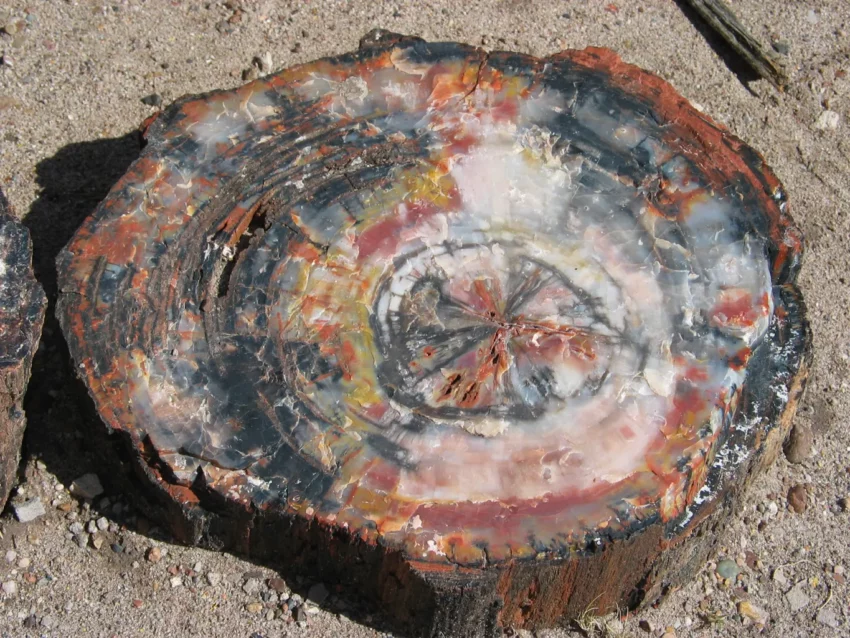Introduction to Petrified Forest National Park
Petrified Forest National Park lies in northeastern Arizona, spanning Navajo and Apache counties. It covers about 346 square miles and features semi-desert shrub steppe and colorful badlands. The park, famous for its petrified wood, was established as a national monument in 1906 and became a national park in 1962.
Get your dose of History via Email
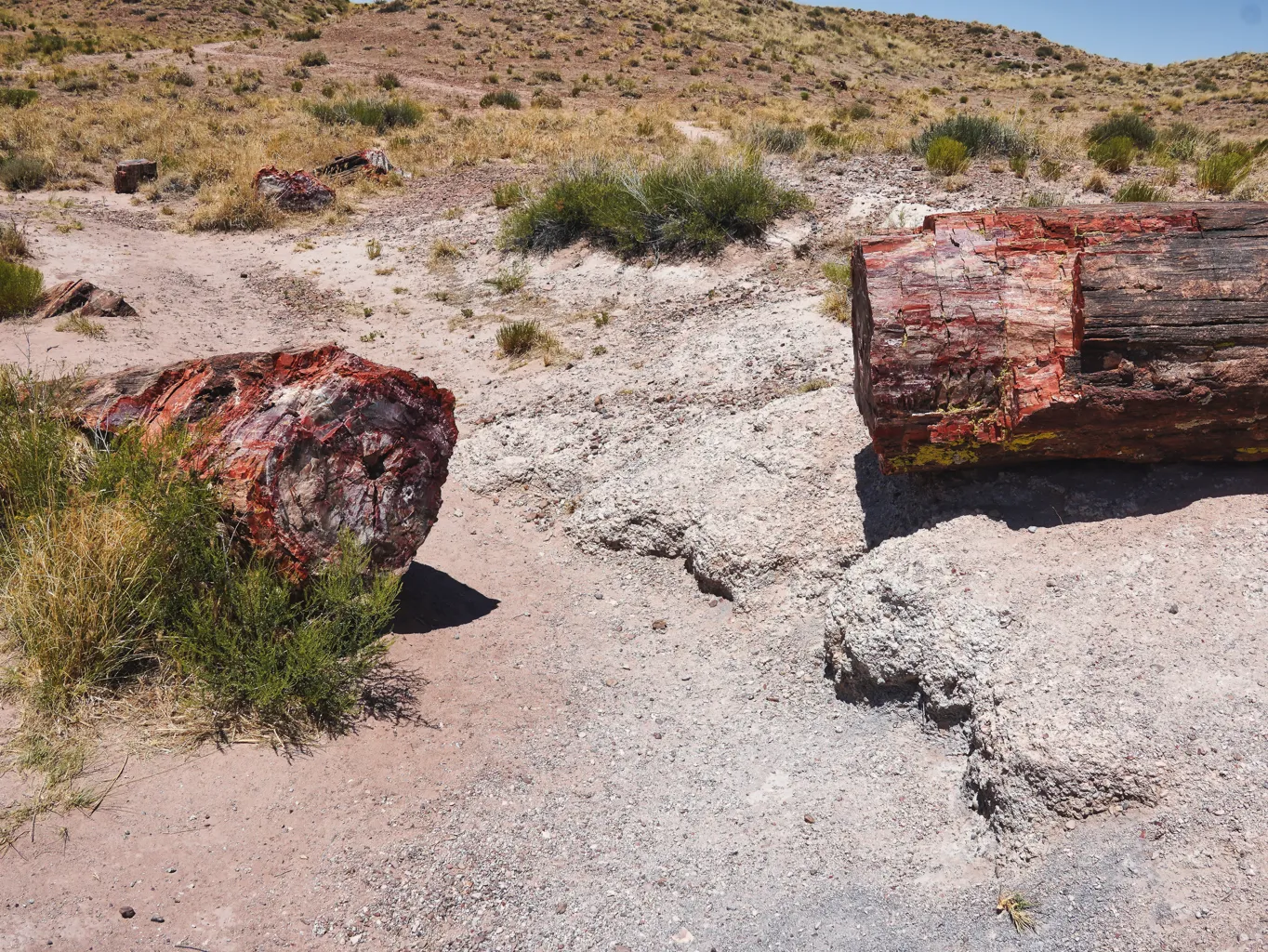
Climate and Wildlife
The park’s average elevation is 5,400 feet, resulting in a dry and windy climate. Summers can reach highs of 100°F, while winters often dip below freezing. The park is home to over 400 plant species, including bunchgrass, blue grama, and sacaton. Wildlife includes pronghorns, coyotes, bobcats, deer mice, snakes, lizards, amphibians, and more than 200 bird species.
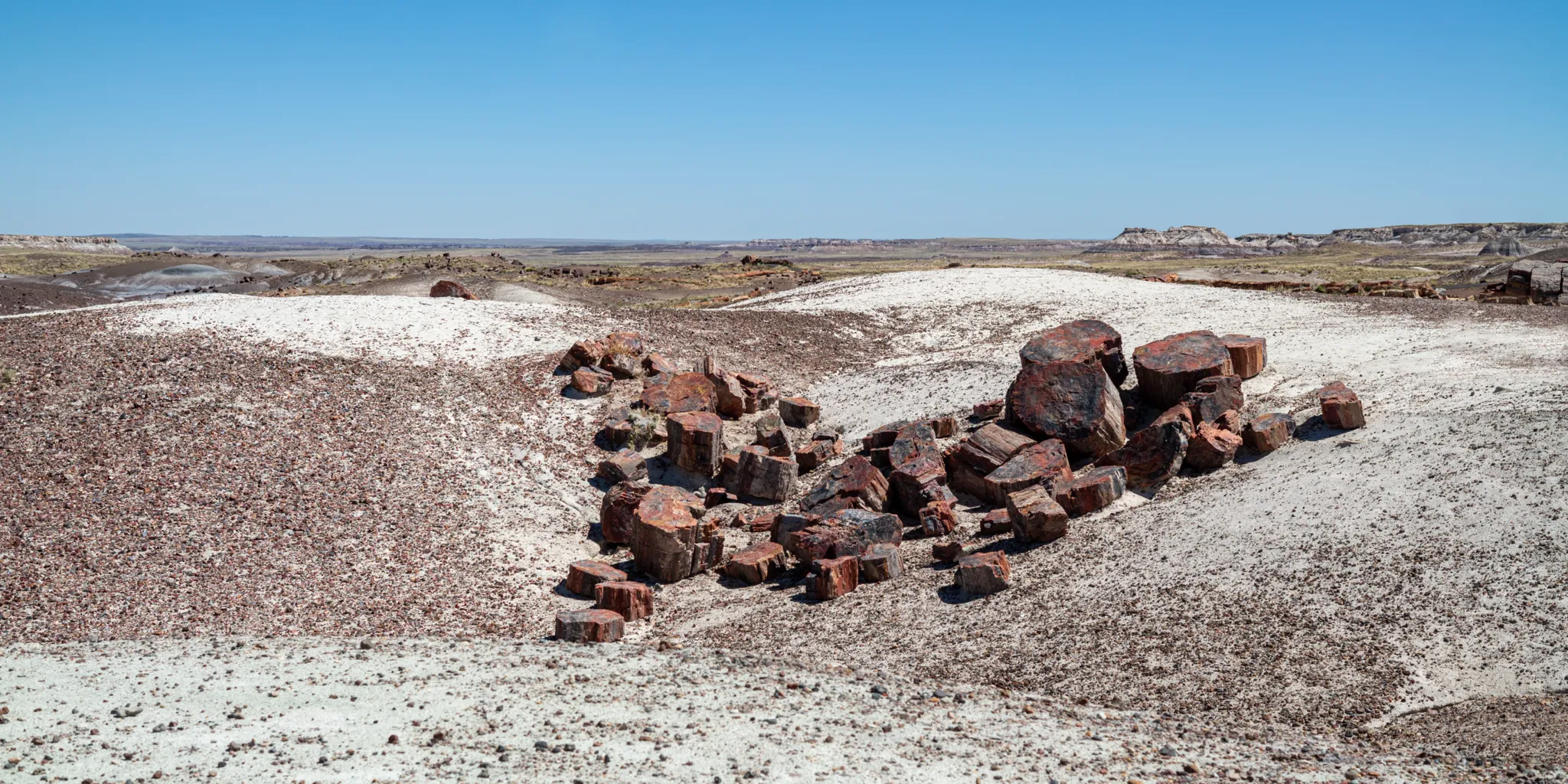
A Fossil Hunter’s Dream
Petrified Forest National Park is renowned for its fossils, especially the ancient trees from the Late Triassic Epoch, around 225 million years ago. The colorful Chinle Formation, which gives the Painted Desert its name, holds these fossil logs. Paleontologists have been studying the park’s rich fossil deposits since the early 20th century.
Human History
Humans have inhabited this area for about 13,000 years. The earliest settlers were Clovis-era people, ancestors of Native Americans. By 2,500 years ago, Ancestral Pueblo farmers lived here, growing corn and residing in pit houses. A thousand years ago, they built above-ground pueblos and gathered in great kivas. By AD 1450, they migrated to the Hopi Mesas and Zuni Pueblo, where their descendants still live today.
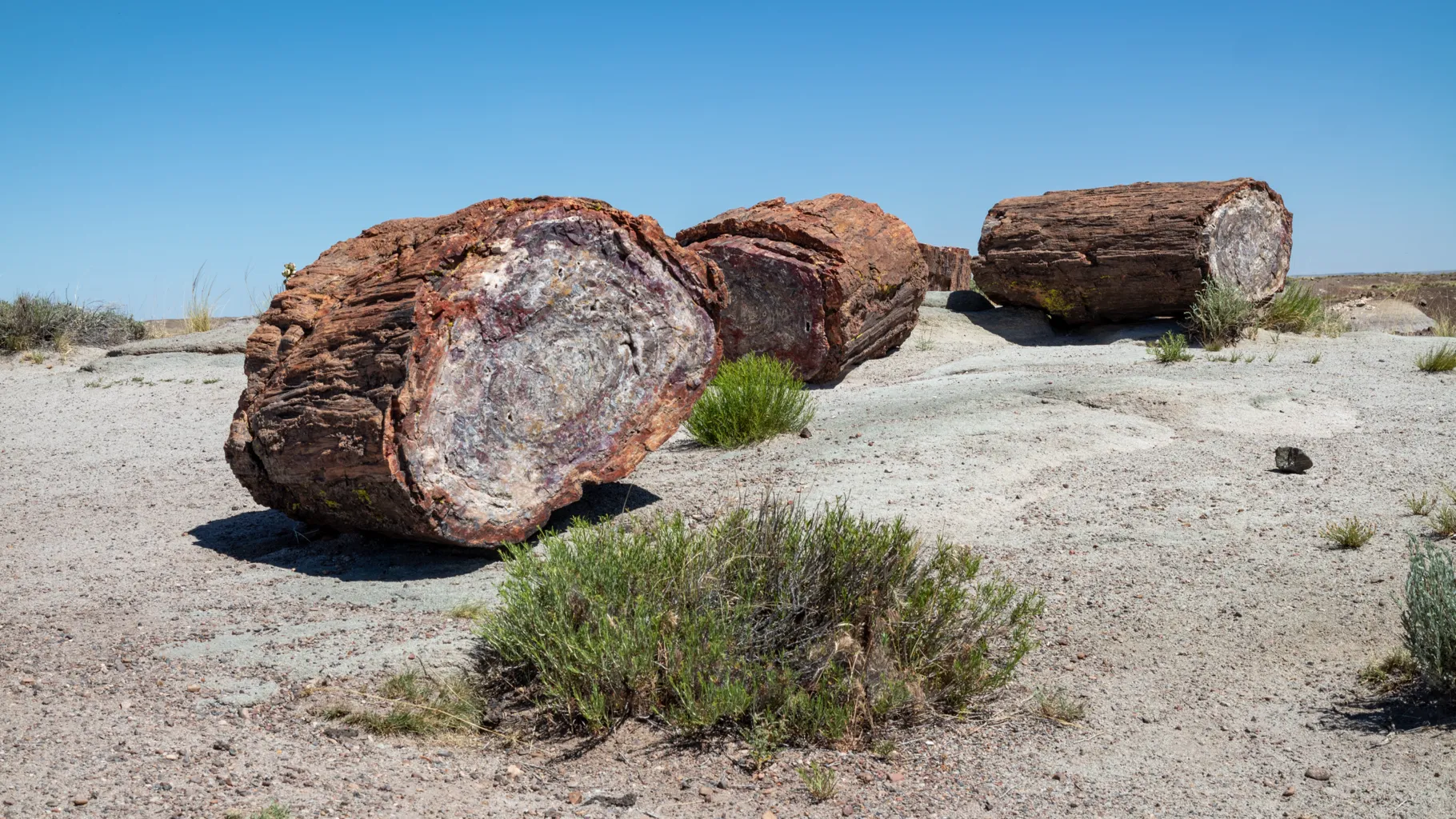
Geography of the Park
Petrified Forest National Park straddles Apache and Navajo counties and stretches 30 miles from north to south. It varies in width from 12 miles in the north to one mile in a narrow corridor between the northern and southern parts. Key landmarks include Interstate 40, U.S. Route 66, and the BNSF Railway, all running east-west across the park.
Diverse Terrain
The park’s terrain ranges from gentle hills and major petrified wood deposits in the south to eroded badlands in the north. Streams like Lithodendron Wash and Dry Wash empty into the Puerco River, while Cottonwood Wash flows into the Little Colorado River in the south.
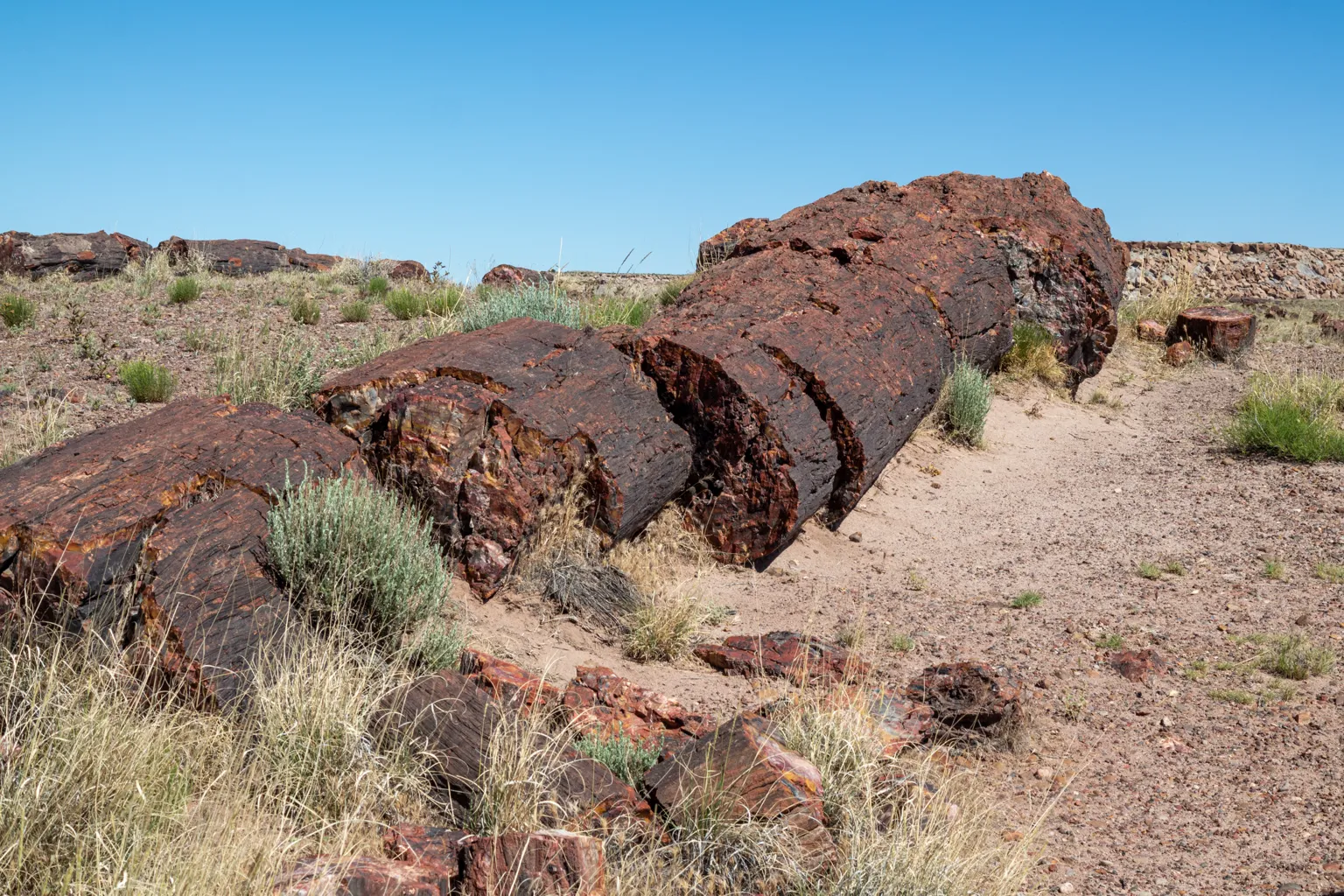
The Wonders of Geology
The park’s geology tells a story of ancient environments and geological processes. About 60 million years ago, tectonic forces uplifted the Colorado Plateau, exposing it to erosion. The colorful Chinle Formation, up to 800 feet thick, contains sedimentary rocks like mudstone, siltstone, and claystone.
Fossil Formation
During the Late Triassic, streams buried fallen trees under sediment containing volcanic ash. Groundwater dissolved silica from the ash, which then replaced the organic matter in the logs, forming quartz crystals. This process preserved the trees as petrified wood, with vibrant colors due to iron oxide and other minerals.
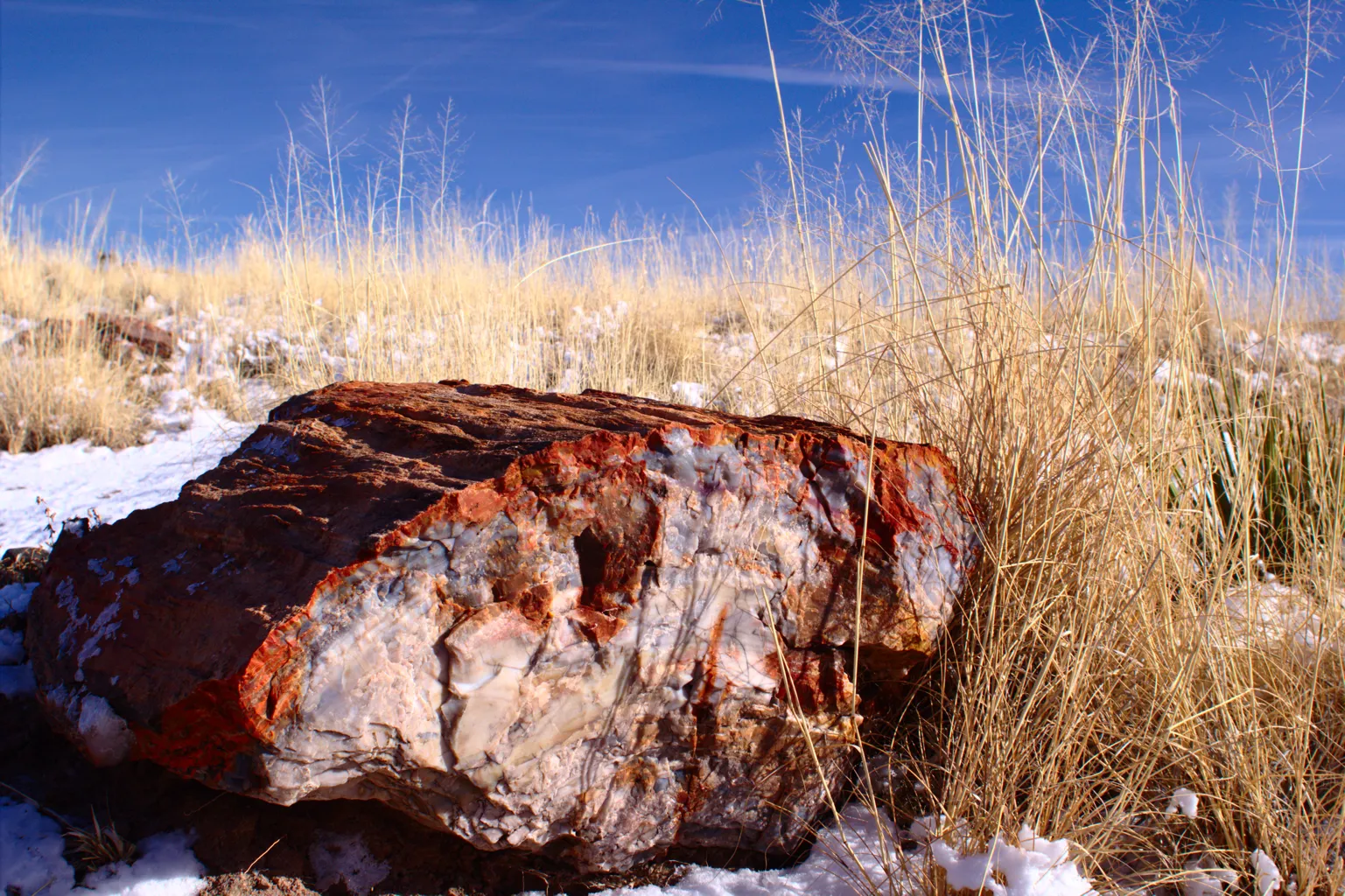
Ancient Life in the Park
Most petrified wood in the park comes from extinct conifer trees like Araucarioxylon arizonicum. The park also boasts a diverse array of fossils, including ferns, cycads, ginkgoes, and various vertebrates from the Late Triassic. Fossils of early theropod dinosaurs, crocodile-line archosaurs, and large amphibians enrich the park’s paleontological significance.
Preservation Challenges
The park faces challenges, including theft of petrified wood. Despite protections, illegal removal of fossils remains a problem. The park continues efforts to preserve and study its rich natural and cultural history, ensuring future generations can experience its wonders.

